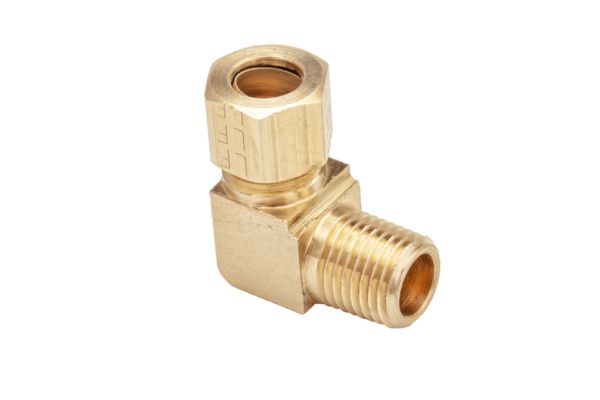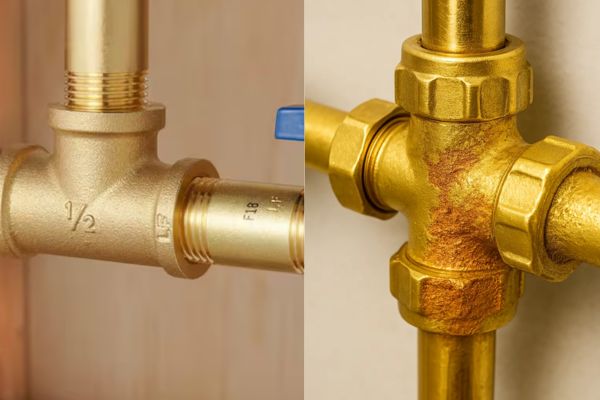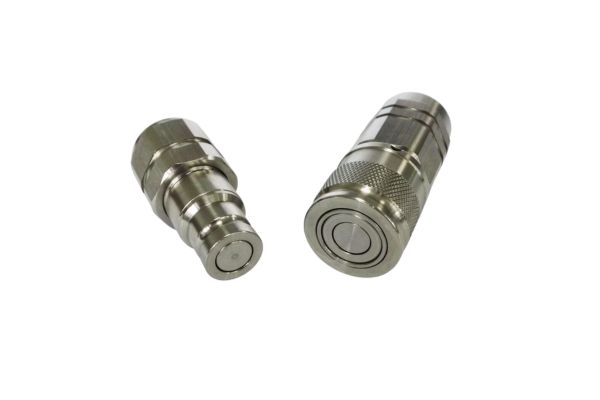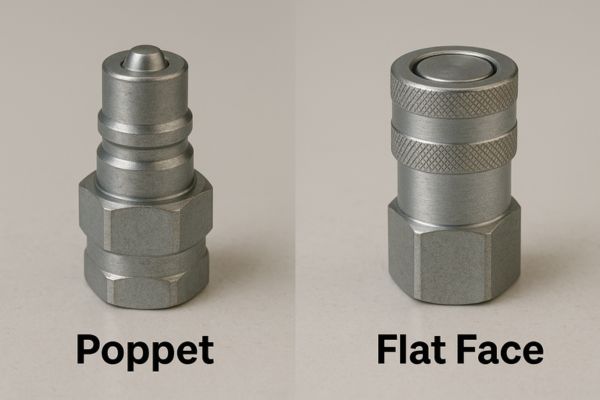That small brass fitting in a drinking water system appears harmless. Yet, it could be a hidden source of lead contamination, creating serious health risks and significant legal liabilities over time.
A brass fitting is only safe for potable water if it is certified “lead-free,” meaning it has a weighted average lead content of 0.25% or less. Look for markings like “LF,” “NL,” or an NSF/ANSI 61 certification to ensure compliance and safety.
What Makes Traditional Brass a Health Concern?
That old, heavy brass fitting has worked for years without apparent issues. But its composition hides a dangerous element that silently jeopardizes water quality with every turn of the tap.
The primary health concern with traditional brass is its lead content. Historically, lead (up to 8%) was added to brass alloys to improve machinability. This lead can leach from the fitting into the drinking water.

The Hidden Danger in the Alloy
The use of lead in brass was a widespread industrial practice for generations. From a manufacturing perspective, lead provided significant benefits. It is a soft, malleable metal that, when added to a copper-zinc alloy, acts as a mechanical lubricant. This made the brass easier to cut, thread, and shape, reducing tool wear and speeding up production. The lead particles would smear over the machined surface, helping create tighter seals in threaded connections.
The problem, however, is that lead does not chemically bind into the brass alloy’s crystalline structure. Instead, it exists as small, discrete particles distributed throughout the metal matrix. When exposed to water, especially water that is soft (low in mineral content), acidic (low pH), or hot, a process called leaching occurs. The water can dissolve these lead particles, releasing toxic lead ions into the water supply. There is no safe level of lead exposure. It is a potent neurotoxin that can cause severe developmental issues in children and serious health problems in adults, including cardiovascular and kidney disease. This is why the focus of modern plumbing regulations is on the complete removal of lead as a functional component in any part of a potable water system.
How Do Regulations Ensure Modern Brass is Safe?
A manufacturer’s claim of “safety” can feel hollow without proof. In a global market, how can you be certain that a fitting truly meets the stringent health standards required for drinking water?
Modern brass is safe due to strict government laws, primarily the U.S. Safe Drinking Water Act (SDWA). This law legally defines “lead-free” and relies on third-party certifications like NSF/ANSI 61 and 372 to verify compliance.

A Framework of Laws and Standards
The safety of modern plumbing is not left to chance; it is governed by a robust framework of legislation and consensus-based standards. The cornerstone of this framework in North America is the Safe Drinking Water Act (SDWA), which was amended by the Reduction of Lead in Drinking Water Act (RLDWA) in 2011. This amendment created a national, legally enforceable definition for “lead-free.”
Key Regulations and Standards:
- The 0.25% Weighted Average Rule: This is the core legal definition. It states that the wetted surfaces of any pipe, fitting, or fixture intended for potable water may not contain more than a weighted average of 0.25% lead. This effectively bans traditional leaded brass from use in new installations or repairs of drinking water systems.
- NSF/ANSI/CAN 61: This is a performance-based standard. It doesn’t just look at what a product is made of; it tests what leaches out of the product. Fittings are exposed to specially formulated water under controlled conditions, and the water is then tested for a wide range of potential contaminants, including lead. A product with NSF-61 certification has been proven not to leach harmful substances into the water at unsafe levels.
- NSF/ANSI/CAN 372: This is a material-based standard that aligns directly with the SDWA. It provides a methodology for verifying that a product’s lead content meets the 0.25% weighted average requirement. It is a certification of content, whereas NSF-61 is a certification of leaching performance.
For our clients, we stress that looking for these certifications is non-negotiable. They are the only reliable assurance that a product is both legally compliant and safe for public health.
| Standard | Purpose | What It Certifies | Relevance |
| SDWA / RLDWA | Federal Law (U.S.) | Sets the legal limit for lead content (0.25% weighted average). | Mandatory legal compliance. |
| NSF/ANSI/CAN 61 | Performance Standard | Certifies that the product does not leach harmful contaminants into water. | The gold standard for health effects safety. |
| NSF/ANSI/CAN 372 | Material Content Standard | Certifies that the product meets the 0.25% lead content requirement. | Verifies legal compliance with the law. |
Can You Visually Identify a Lead-Free Brass Fitting?
You are holding two brass fittings that look almost identical. Making the wrong choice could compromise a plumbing project, but there are no obvious visual cues to tell them apart.
No, you cannot reliably identify a lead-free fitting by sight alone. While some lead-free alloys have a slightly different color, the only definitive proof is the specific markings stamped onto the fitting’s body by the manufacturer.

A Language of Markings
Relying on subtle visual differences like color or sheen to identify lead-free brass is a dangerous gamble. While some lead-free alloys containing bismuth may have a slightly more yellow or reddish hue compared to the duller gray-yellow of traditional leaded brass, this is not a reliable indicator. Different manufacturing processes and surface treatments can alter the appearance, making visual identification guesswork.
The only trustworthy method is to inspect the fitting for specific, industry-standard markings. Reputable manufacturers are required to stamp their products to indicate compliance.
What Are The Best Brass Alloys for Drinking Water?
Knowing a fitting is “lead-free” is a good start, but are all lead-free alloys the same? The long-term durability of a plumbing system depends on choosing an alloy that resists corrosion.
The best alloys are not only lead-free but also resistant to dezincification (DZR). Excellent choices include Silicon Brass (e.g., C87850), Bismuth Brass (e.g., C89833), and specific DZR brasses like CW511L in Europe.

Beyond Lead-Free to Long-Term Reliability
Removing lead from brass alloys forced metallurgists to find alternative elements that could provide good machinability without the toxicity. This has led to the development of several new families of high-performance brass. However, another critical factor for longevity in potable water systems is dezincification. This is a corrosive process where zinc is selectively leached from the brass alloy, leaving behind a porous, brittle, and copper-rich structure that is prone to sudden failure.
The best modern alloys address both issues. They are lead-free and formulated to be dezincification-resistant (DZR or DR).
- Bismuth Brass (e.g., C89833, C69300): Bismuth acts similarly to lead in improving machinability but is non-toxic. These alloys offer excellent performance and are a common choice for cast and forged fittings.
- Silicon Brass (e.g., C87850, C46500): Silicon is another alternative. It not only improves machinability but also provides excellent corrosion resistance and dezincification resistance. Silicon brasses are known for their strength and reliability.
- European DZR Brasses (e.g., CW602N, CW511L): These alloys are specifically engineered to resist dezincification in aggressive water conditions and meet stringent European standards for potable water use.
As a supplier to a global market, we work with a portfolio of these advanced alloys to provide fittings that not only meet legal requirements but also offer superior long-term performance and peace of mind.
| Alloy Family | Key Alloying Element | Primary Advantage | Common UNS / EN Codes |
| Silicon Brass | Silicon (Si) | Excellent corrosion/dezincification resistance. | C46500, C87850 |
| Bismuth Brass | Bismuth (Bi) | Good machinability, excellent substitute for lead. | C69300, C89833 |
| DZR Brass | Arsenic (As), Tin (Sn) | Specifically inhibits dezincification process. | CW602N, CW617N |
| “No-Lead” Brass | Low-Lead (Compliant) | Meets 0.25% rule, often with other elements. | CW510L, CW511L |
Are Other Materials Better Than Brass for Potable Water?
Brass is a traditional choice, but are newer materials a better option? Choosing the right material involves balancing cost, installation complexity, and long-term durability for a specific job.
While lead-free brass offers an excellent balance of properties, other materials like stainless steel, copper, and PEX (cross-linked polyethylene) are also safe and widely used. Each has its own distinct advantages and disadvantages.
A Comparison of Common Materials
The best material for a plumbing job depends on the specific application, budget, and local building codes. Lead-free brass is often the go-to choice, but it’s important to understand the alternatives.
Stainless Steel (Grades 304 & 316)
- Advantages: Superior corrosion resistance, especially Grade 316 which resists chlorides. Extremely strong and durable with high temperature and pressure ratings. Aesthetically pleasing for exposed applications.
- Disadvantages: Significantly more expensive than brass. Harder material, making it more difficult to machine and seal properly.
Copper
- Advantages: A long, proven history of safety and reliability in plumbing. Biostatic properties that inhibit bacterial growth. Widely available.
- Disadvantages: Requires soldering or proprietary press-fittings, which can be labor-intensive. Susceptible to corrosion from highly acidic or aggressive water.
PEX (Cross-linked Polyethylene)
- Advantages: Highly flexible, allowing for easier and faster installation with fewer fittings. Lower material cost. Resistant to scale buildup and corrosion.
- Disadvantages: Susceptible to degradation from UV light exposure. Lower pressure ratings than metal systems. Some concern over potential chemical leaching, though PEX meeting NSF-61 is tested for safety. Fittings are typically made of DZR brass or plastic.
For most standard commercial and residential applications, certified lead-free brass provides the optimal blend of strength, proven reliability, and cost-effectiveness.
What Are the Risks of Using the Wrong Fitting?
Using a cheap, non-compliant fitting seems like a minor shortcut. But this decision carries unseen consequences that can lead to catastrophic health, legal, and mechanical failures down the line.
Using a non-compliant fitting exposes you to immense risk: endangering public health through lead poisoning, facing severe legal and financial liability for violating plumbing codes, and experiencing premature plumbing failures from corrosion.

A Cascade of Negative Consequences
The decision to use a non-compliant brass fitting in a potable water system is not a minor infraction; it’s a critical error with a cascade of potential consequences that can affect health, finances, and reputations.
1. Severe Health Risks
This is the most important consideration. The primary purpose of lead-free regulations is to protect public health. Knowingly or unknowingly installing a leaded brass fitting in a drinking water line contributes to the risk of lead exposure for every person who uses that water source. The long-term health impacts, especially for vulnerable populations like children and pregnant women, are severe and irreversible.
2. Legal and Financial Liability
Violating the Safe Drinking Water Act and local plumbing codes is a serious offense. For a business or contractor, this can result in substantial fines, loss of licenses, and being forced to bear the full cost of replacing the entire non-compliant system. In the event of documented lead contamination, the risk of civil lawsuits from affected individuals is enormous and can be financially devastating.
3. Mechanical Failure and Property Damage
Beyond the lead issue, non-DZR brass used in aggressive water conditions is a ticking time bomb. Dezincification weakens the fitting from the inside out, making it brittle and prone to cracking under normal system pressure. A sudden failure can lead to catastrophic water damage, resulting in costly repairs, mold remediation, and significant operational downtime. The small initial savings from a cheap fitting are dwarfed by the potential cost of a single failure.
Conclusion
Selecting certified lead-free brass for potable water is not merely about compliance. It is a fundamental commitment to ensuring public health, system integrity, and professional accountability in every project.
At Topa, we understand the critical importance of using the right components. We specialize in providing a comprehensive range of high-quality, fully certified lead-free brass fittings that meet the strictest international standards, including NSF/ANSI 61 and 372. Our commitment to quality ensures that you receive products that are not only legally compliant but also engineered for long-term durability and safety. Whether you need standard NPT fittings, compression valves, or custom components, our team is ready to help you select the precise, certified solution for your potable water application. Partner with Topa for fittings that deliver performance, compliance, and peace of mind.






